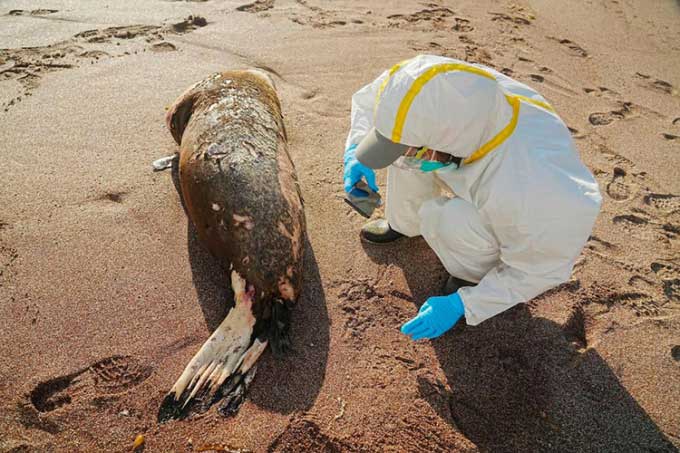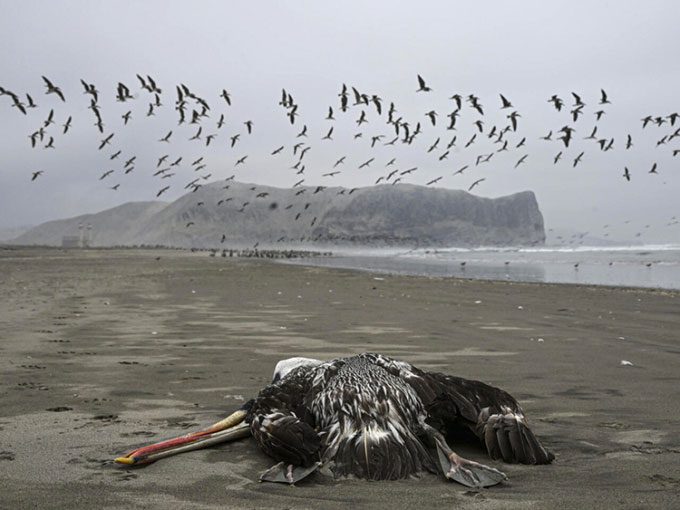According to a recent report, up to 585 sea lions and 55,000 wild birds have died from the H5N1 avian influenza in Peru.

A dead sea lion on the beach in Peru. (Photo: AFP)
The National Protected Areas Service (Sernanp) reported on February 7 that the remains of the sea lions were found in seven protected areas of Peru, while carcasses of birds—including pelicans, various gull species, and penguins—were discovered in eight areas.
Laboratory tests confirmed the presence of the H5N1 avian influenza virus in the deceased animals, prompting authorities to issue warnings and advise the public to avoid contact with sea lions and wild birds along the beach.
According to the Agricultural Health Service (SENASA), the avian influenza virus spreads through migratory birds from North America. In December of last year, the Peruvian government culled 37,000 poultry at a chicken farm due to H5N1 outbreaks that previously affected wildlife.

Pelicans among the wild bird species affected by avian influenza in Peru. (Photo: AFP).
It is very rare for avian influenza to infect mammals, but recently the virus has been found in foxes and otters in the UK, cats in France, and grizzly bears in Montana. All of these were believed to have consumed infected birds.
The coast of Peru is home to the South American sea lion, one of the largest and most sexually dimorphic species of sea lions. Males can grow up to 3 meters long and weigh 350 kg, while females reach lengths of 2 meters and weights of 150 kg. In addition to their primary diet of fish and cephalopods, they also hunt various seabird species like pelicans and penguins.


















































